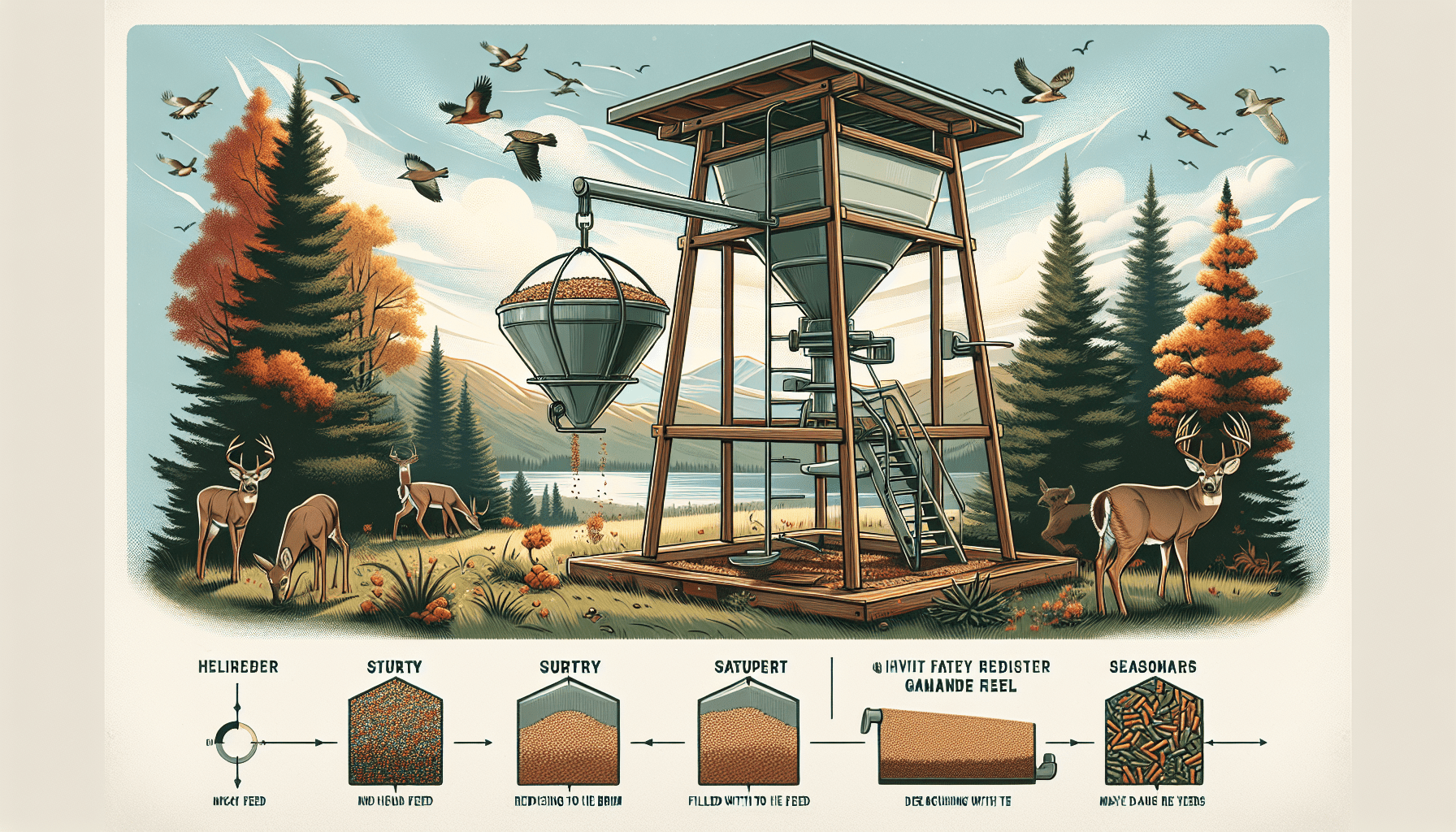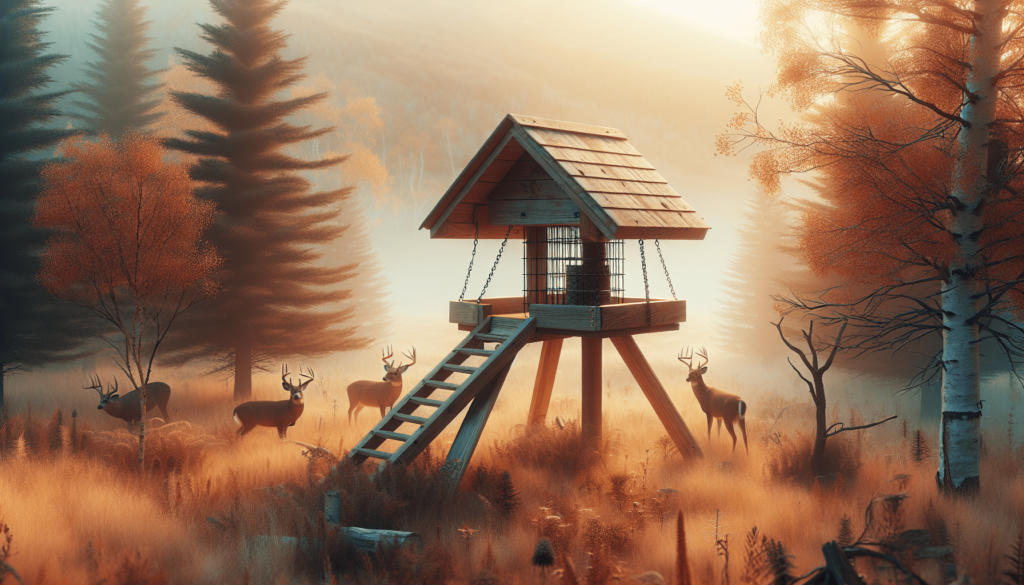
Maintaining your gravity deer feeder throughout the seasons is essential for ensuring a consistent food source for deer. From spring to winter, this ultimate guide provides you with expert tips and techniques to keep your feeder in top condition. Whether it’s cleaning, inspecting, or adjusting the feeder, you’ll learn how to prevent clogs, attract more deer, and prolong the lifespan of your feeder. Get ready to become a pro at maintaining your gravity deer feeder and creating the perfect environment for these graceful creatures to thrive.

Understanding Your Gravity Deer Feeder
Basic structure of a gravity deer feeder
A gravity deer feeder is a simple device designed to automatically dispense feed to attract deer. It consists of a durable container for holding the feed and a funnel or tube that allows the feed to flow down into a trough or tray. The feed is dispensed through the force of gravity, as the weight of the feed above pushes it down. The structure is typically made of sturdy materials such as metal or heavy-duty plastic to withstand the outdoor elements.
The function of a gravity deer feeder
The main function of a gravity deer feeder is to provide a convenient and consistent food source for deer. By setting up a gravity feeder in an area frequented by deer, you can attract them to the location and encourage them to stick around. This can be especially beneficial for hunters, as it allows them to scout and observe deer patterns in preparation for the hunting season. Additionally, a gravity deer feeder can help support the overall health and well-being of deer, especially during times when natural food sources may be limited.
Different types of gravity deer feeders
There are several different types of gravity deer feeders available on the market, each with its own unique features. One common type is the tripod feeder, which consists of a three-legged stand that holds a large container for the feed. This type of feeder is often adjustable in height and allows for easy filling and maintenance. Another type is the hanging feeder, which is suspended from a tree limb or other elevated structure. Hanging feeders are typically smaller in size and can be a good option for those with limited space or who prefer a more portable option. Additionally, there are also tube feeders, which are designed to hold and dispense feed over an extended period without the need for frequent refilling.
Selecting the Right Spot for Your Gravity Feeder
Proximity to deer trails
When choosing a location for your gravity deer feeder, it’s essential to consider deer behavior and their movement patterns. Look for areas near deer trails or preferred travel routes. These can be identified by tracks, droppings, or well-worn paths through vegetation. Placing your feeder in proximity to these trails increases the chances of attracting deer and encourages them to visit regularly.
Consideration for wind direction and cover
Deer have excellent senses, including a keen sense of smell. To increase the effectiveness of your gravity feeder, pay attention to wind direction when selecting the placement. Position the feeder downwind from the anticipated direction of deer travel, as this will reduce the chances of them detecting human scent. Additionally, consider natural cover such as trees or brush that can provide deer with a sense of security while feeding.
Factor in food sources and water source
For a successful gravity deer feeder, it’s important to take into account the availability of natural food sources in the area. Place your feeder in an area where there is a limited supply of natural food during certain times of the year, such as during the winter months or periods of drought. This increases the likelihood that deer will be drawn to the feeder for an alternative food source. Additionally, if possible, locate your feeder near a water source to provide a complete attractant for deer.

Deer Feeder Maintenance Basics
Routine inspection scheduling
Regular maintenance and inspection of your gravity deer feeder are crucial to ensure its optimal functionality. Establish a routine inspection schedule, depending on the frequency of use and prevailing weather conditions. During the hunting season, consider checking the feeder at least once a week. In contrast, during offseason months, a monthly inspection may suffice.
Key parts to check during an inspection
When inspecting the feeder, pay close attention to certain key parts that are prone to wear and tear. Start by examining the container for any signs of cracks, holes, or damage that could compromise the feed storage. Next, check the funnel or tube for clogs or obstructions that could impede the flow of feed. Inspect the feeding tray or trough for rust, corrosion, or any sharp edges that could potentially harm the deer. Finally, ensure the mounting or hanging mechanism is secure and stable to prevent accidents or damage to the feeder.
Understanding common deer feeder issues and how to fix them
Despite their simplicity, gravity deer feeders may sometimes encounter common issues. One common problem is clogging, where the feed becomes compacted and obstructs the flow. To fix this, clean out any debris or clogs in the funnel or tube. Another issue is rodent or raccoon interference, which can lead to feed theft or damage to the feeder. Implementing deterrents, such as using baffles or placing wire mesh around the feeder, can help prevent such problems. Additionally, regular cleaning and maintenance will go a long way in addressing any minor issues and maintaining optimal functionality.



